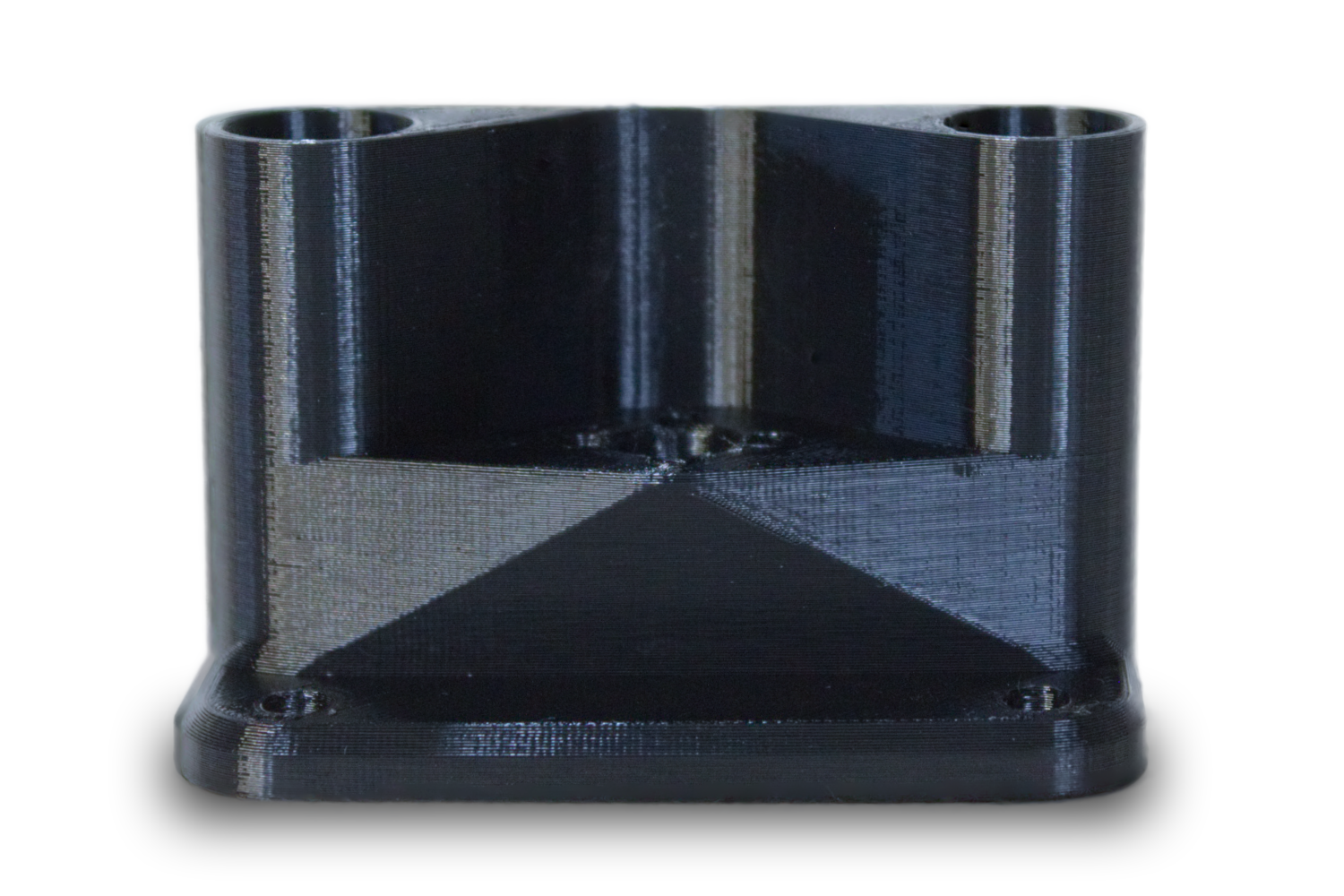Injection Molding vs. 3D Printing
These days, plastic parts are in almost every piece of hardware out there. Almost all plastic parts are injection molded; it’s a great method for producing a ton of parts without changing the design. However if production volume is small or the design changes frequently, 3D printing offers a powerful alternative that can save a lot of time and money. In fact, it is the cost savings of 3D printing that made developing the Nautilus possible to begin with! We wanted to show the power of 3D printing through a case study on one of the parts that appears on the Nautilus: a Z-Axis Gantry.
The Z-Gantry attaches to the Z-Axis and holds the build plate
The Case Study
For the sake of this case study, we will create a hypothetical development process. Let’s pretend that we designed the part and produced ten for testing the prototype. Then, we made some improvements and produced ten more for final validation before production. Finally, we produced 100 of those parts for our production run of 50 printers. We will compare this process across three options for part production: injection molding, hiring a 3D print service, and in-house 3D printing. For the sake of comparison, we got cost estimates for injection molding and the 3D print services from Hubs.
Realistically, most parts on the Nautilus went through far more than one revision before being finalized and that is not at all uncommon for products under development. Keep this in mind when reading the case study, if we actually needed every revision of all of our parts injection molded the cost of development would have been astronomical!
The Numbers:
Injection Molding
Injection molding the prototype and validation runs costs $4,662.20 for tooling for each run and an additional $0.58 per part coming to a total of $4,668 per run. The lead time for each run of injection molded parts is 2-8 weeks. For the production run there is no additional tooling fee since it is the same mold as the second version, so there is just a cost of $580 to produce those hundred parts. This comes to a total cost $9,916 and a total production time of 6-24 weeks.
3D Print Service
For that same process using a 3D print service, there are no tooling fees but the cost is $9.46 per part coming to a total of $94.60 with a lead time of 4 business days per run. For the final production run, 3D Hubs offers a bulk discount, it costs $8.13 per part to make 100 of them which results in a cost of $813 and a lead time of 9 business days. The final cost is $1,002.20 with a total lead time of 17 business days or 3.4 weeks.
In-House Printing
Finally to produce those same parts in house, we did all calculations for printing on the Nautilus and included machine upkeep and electricity costs. Producing our Z-Axis Gantry costs $1.50 per part and takes about 1 hr 45 min to print a single part. Assuming an 8-hour work day, we could produce 10 parts for $15 in 2 business days for the first two runs. For the final production run, assuming only one Nautilus is used, producing 100 parts would cost $150 and take 13 business days. This comes to a final cost of $180 over 17 business days or 3.4 weeks.
Now we compare:
Injection molding the plastic parts is by far the slowest and most expensive way to product parts for R&D and small scale production. Using a print service like 3D Hubs is significantly cheaper and faster, allowing a designer to save a lot of time and money without ever interacting with a 3D printer. However if we look at the costs of using your own 3D printer, it is an order of magnitude cheaper than even the print service! We did our calculations assuming we only had one printer, lead times scale with number of printers so that final production run could be done in mere days with a farm of Nautili!


